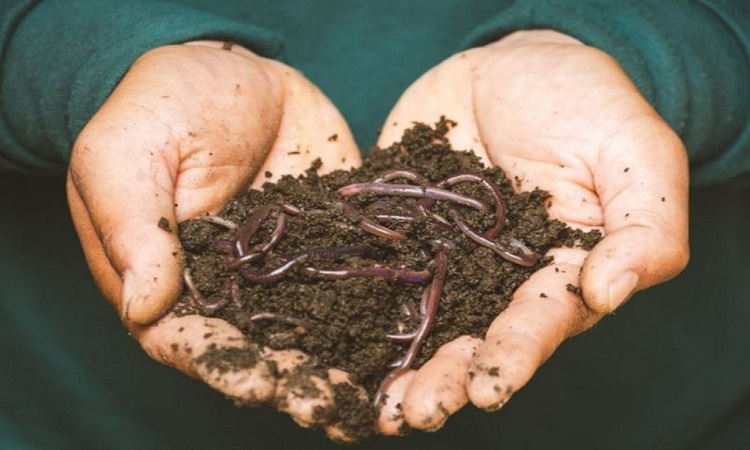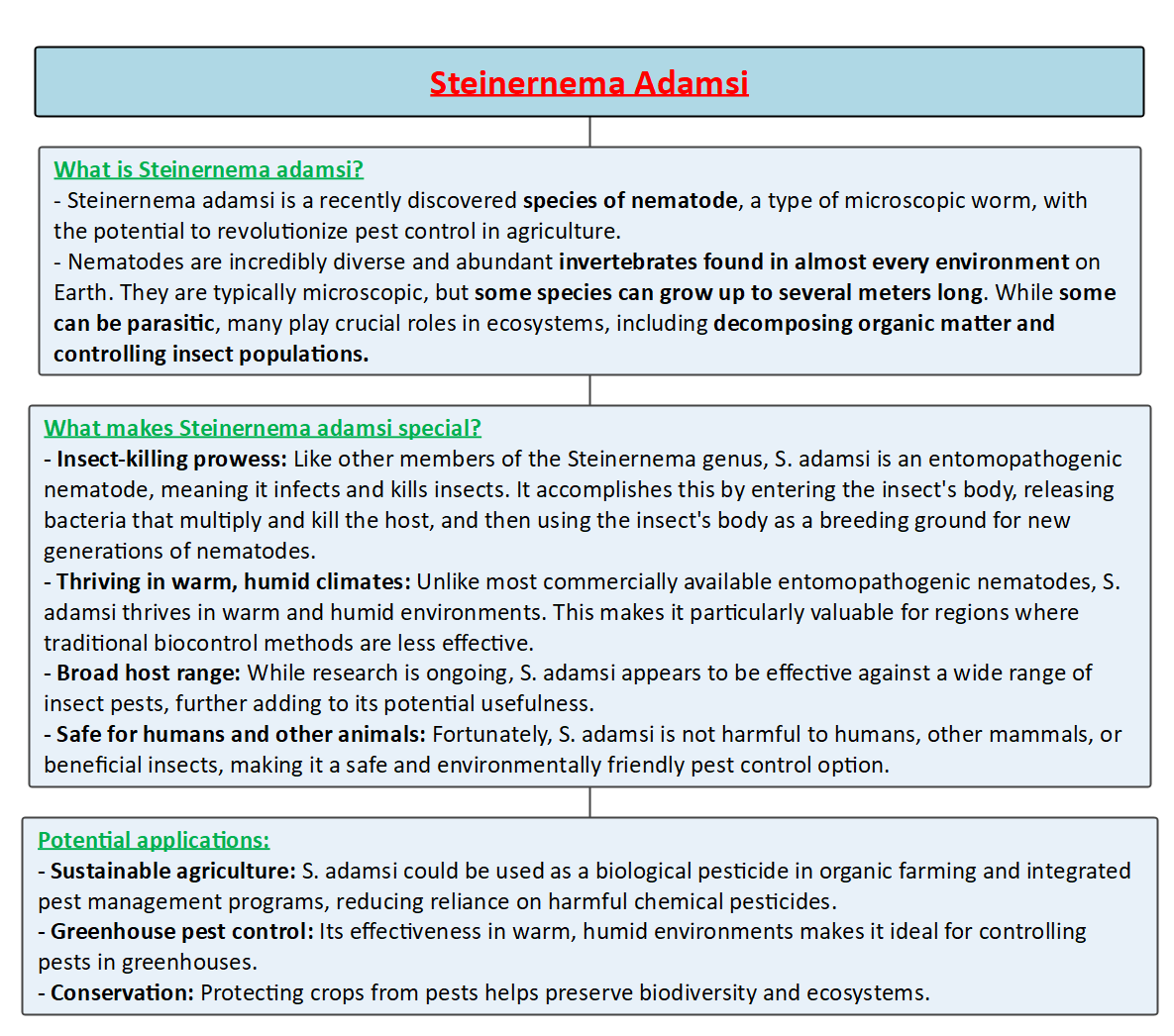STEINERNEMA ADAMSI

Copyright infringement not intended
Picture Courtesy: https://www.dynamitenews.com/story/nematode-species-that-protect-crops-without-pesticides
Context: Scientists discovered a new nematode species named Steinernema adamsi, a tiny worm about half the width of a human hair that kills insects by injecting them with bacteria. It thrives in warm, humid climates where other beneficial nematodes struggle.
Details
- Scientists at the University of California have identified Steinernema adamsi, a tiny nematode species capable of infecting and eradicating insects. This discovery holds immense potential for transforming crop pest control methods, particularly in warm and humid regions.
- Steinernema adamsi, belonging to the Steinernema family, offers a pesticide-free solution for managing insect parasites in agriculture. With its ability to target and kill insects, this nematode species presents a promising alternative for sustainable crop protection practices.
Background
- The Steinernema family, discovered in the 1920s, has become a cornerstone in agricultural pest management due to its efficacy in controlling pests. With over 100 species, each possessing unique characteristics, Steinernema nematodes offer tailored solutions for various climates and insect types, ensuring effective pest control in diverse agricultural settings.
Physical Characteristics
- Steinernema adamsi is incredibly small, measuring less than 1 millimetre in length and approximately half the width of a human hair. Even in a concentrated flask, these nematodes are barely visible to the naked eye, appearing like dusty water due to their minuscule dimensions.
- The researchers opted to honour American biologist Byron Adams from Brigham Young University by naming the newly discovered species after him. This decision reflects Adams' significant contributions to the field of nematology, underscoring his dedication and achievements in advancing our understanding of nematode biology and ecology.
Biological Significance
- Unique Life Stage: Steinernema adamsi exhibits a distinctive life stage as juveniles, residing in the soil with sealed mouths while in a state of arrested development. This characteristic sets them apart and adds to the intrigue of their biology.
- Active Infection Strategy: Despite their small size, these nematodes demonstrate an active and strategic approach to infecting insects. They actively seek out potential hosts, entering through openings such as the mouth or anus, showcasing a sophisticated infection strategy.
- Pathogenic Bacterial Action: Once inside the host, Steinernema adamsi nematodes employ a remarkable tactic by defecating highly pathogenic bacteria. This bacterial secretion plays a crucial role in the infection process, contributing to the rapid breakdown of the host's internal tissues.
- Efficient Host Decomposition: The combined action of nematode infection and pathogenic bacterial activity leads to the swift decomposition of the host insect, with the entire process completed within a remarkably short timeframe of 48 hours. This efficiency underscores the potential of Steinernema adamsi in controlling insect pests.
- Prolific Reproduction: After the host insect's rapid demise, Steinernema adamsi undergoes a prolific reproductive phase within the remains, generating thousands of new nematode individuals. This reproductive cycle ensures the rapid multiplication and continued effectiveness of these nematodes in addressing insect infestations.
Practical Applications
- Initial experiments have substantiated the practical applicability of Steinernema adamsi in pest control. The nematode demonstrated noteworthy effectiveness by successfully eliminating wax moths within a short time frame of two days, even when exposed to low nematode doses.
- The observed potential of S. adamsi to effectively target and eliminate wax moths hints at its versatility as an insect parasite. This adaptability positions the nematode as a promising addition to the existing array of nematodes utilized for pest control in agriculture, offering a potential solution for a wide range of insect infestations.
- Steinernema adamsi's ability to deliver efficient pest control with low doses, coupled with its versatility, suggests that it could bring innovation to the existing arsenal of nematodes used in agriculture. Its unique attributes may offer enhanced and sustainable solutions for managing diverse pest challenges in different agricultural settings.

Conclusion
- The discovery of Steinernema adamsi represents a significant step forward in the development of sustainable pest control solutions. Its unique characteristics and potential applications offer a glimpse into a future where agriculture can be productive without harming the environment or human health.
|
PRACTICE QUESTION Q. ‘Steinernema adamsi’ has been featured in recent news headlines. What is Steinernema adamsi? A) A new type of smartphone app B) A newly discovered species of nematode C) A revolutionary new fabric for clothing D) A type of bacteria used in food production Answer: B Explanation: Steinernema adamsi is a newly discovered species of nematode, a microscopic roundworm, which has generated excitement in the world of sustainable agriculture. This tiny warrior, barely visible to the naked eye (around 0.5mm long and half the width of a human hair), holds the potential to revolutionize pest control in warm, humid climates. |





1.png)
